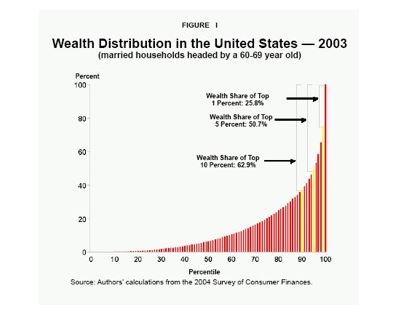Oztok: Wealth inequality
When it comes to financial literacy and personal wealth, it’s crucial to understand the importance of investing in the stock market.
October 10, 2022
Wealth inequality is an extremely complex topic, and we may never be able to solve it.
It has been one of the fundamental issues in societies ever since humans formed civilizations. You probably heard that billionaires got considerably richer, especially during the pandemic. You also heard various statistics about how the top 1% of wealthiest people own most of the total wealth.
According to Bloomberg, the 50 richest Americans now hold almost as much wealth as half of the United States. So, why do the rich get richer and the poor get poorer?
We can look at the historical data and observe similar trends in all sorts of economies, and the problem of wealth inequality is not the consequence of one particular economic system. The fundamental issue at hand is a consequence of all creative production.
Most college students are required to take a statistics class, especially if they are in a social science or business degree program. In statistics courses, we were taught that most distributions follow normal patterns, meaning that most values cluster around a central region, with values tapering off as they go further away from the center.
One of the mistakes we constantly make is to think that most distributions follow the graph above. Such distributions tell us nothing about why so few own so much. A more useful way to think about topics such as wealth inequality is by looking at a specific power-law probability distribution called Pareto Distribution. You may have also heard this called the “Pareto Principle” or “80-20 Rule.”

About a decade ago, the Italian economist Vilfredo Pareto realized that about 80% of the land in Italy was owned by 20% of the people, hence the name Pareto Principle. The principle relates to this piece by observing that 80% of the wealth in the society is held by 20% of its population.

Pareto distribution captures many things, whether natural events or human activities. This distribution runs almost everything you can think about, especially creative production. One of the first things I did when I learned about the Pareto Principle was to check how the principle applies to sports. Researchers at Normal University in China studied 12 different sports and came to the same conclusion–wealth and success follow power laws.
Here are some other examples:
- 80% of investment gains are produced by 20% of investments.
- 80% of sleep quality occurs in 20% of sleep.
- 80% of profits in any industry are made by 20% of firms.
So, why does creative production of almost any kind follow this pattern? The answer is simply that almost everything we produce fails and or turns out insignificant in a broader sense, and a few that do not fail produce incredibly impressive results.
Various economic systems tried to approach this problem in different ways. One of the observations Karl Marx, whose ideas served as the basis for communism, made is that in capitalism, the capital would flow into the hands of fewer and fewer people, and the separation between the rich and the poor becomes extreme over time, thus creating social instability.
However, he did not realize that no system is immune from such occurrences. The country’s communism was tried, and the results showed that the majority of wealth clustered in top-governing bureaucracies rather than the people.
The most popular approach we have today is wealth distribution via taxation. Governments take from the rich and give it to the poor. The problem with this approach is that as you shovel money down, the money funnels back up to the top, delivering no long-term solution.
Extreme wealth inequality is certainly not ideal and is an extremely complex problem. One thing we have to remember is that almost no production schemes follow a normal distribution. As individuals differ in talent, skills, knowledge, etc., the Pareto Principle will always be in the picture, and we will not be able to magically stop such trends.
Many things need further examination regarding wealth distributions, but I believe we should approach the problem of wealth inequality in a much more cautious and skeptical manner.


















ExcuseMyLogic | Oct 11, 2022 at 3:55 pm
While it may sound great to live in a society where everyone has the same amount of wealth, this has been tried before! In countries where wealth distribution is common, citizens all have the same amount of money and everyone is lower middle class. Wealth distribution doesn’t make everyone rich – it makes a significant amount of people poorer.
Another problem with this system is that if everyone is guaranteed to get money no matter what- less people will work. A prime example of this was during Covid. When workers were told to go home and the government sent them money – everyone quit their jobs! Now that Covid is over – businesses are begging people to come work for them – but they have been largely unsuccessful!
Moral of the story: if people get money for free they will not work. Wealth distribution provides no incentive for driven people to be successful and makes a society as a whole unmotivated and inefficent.